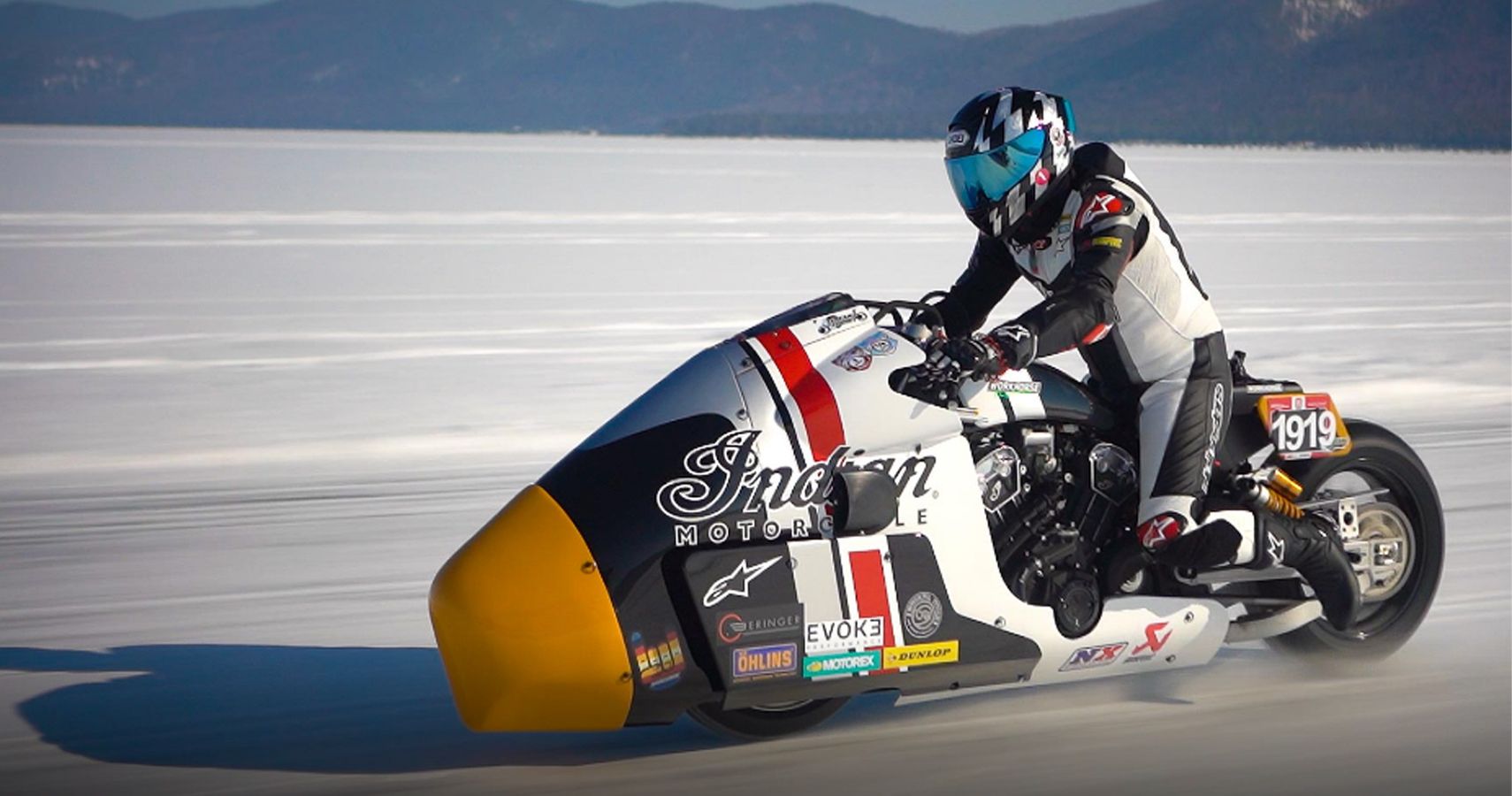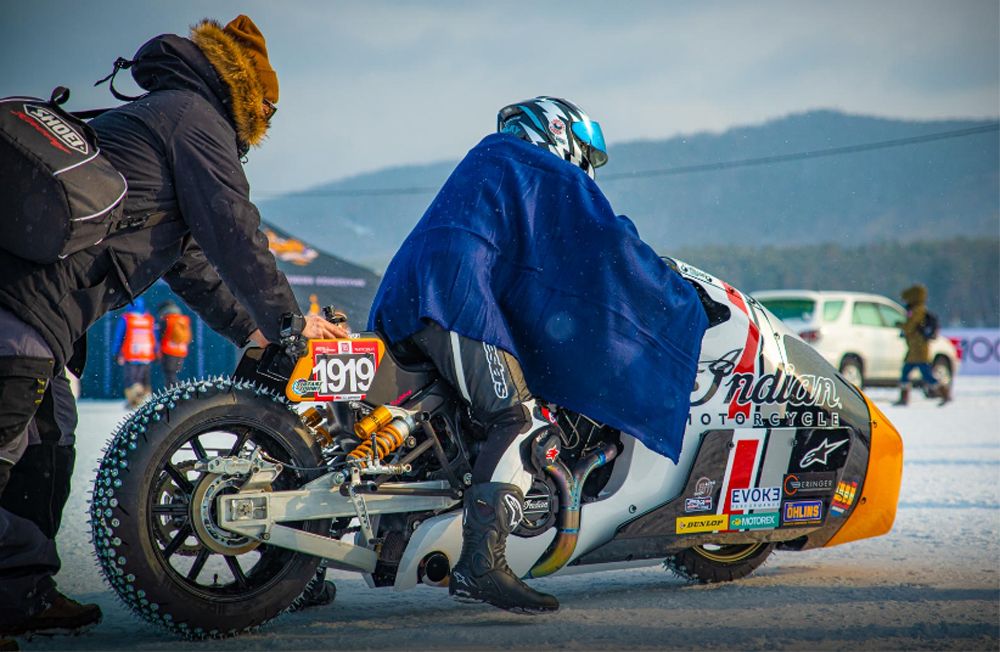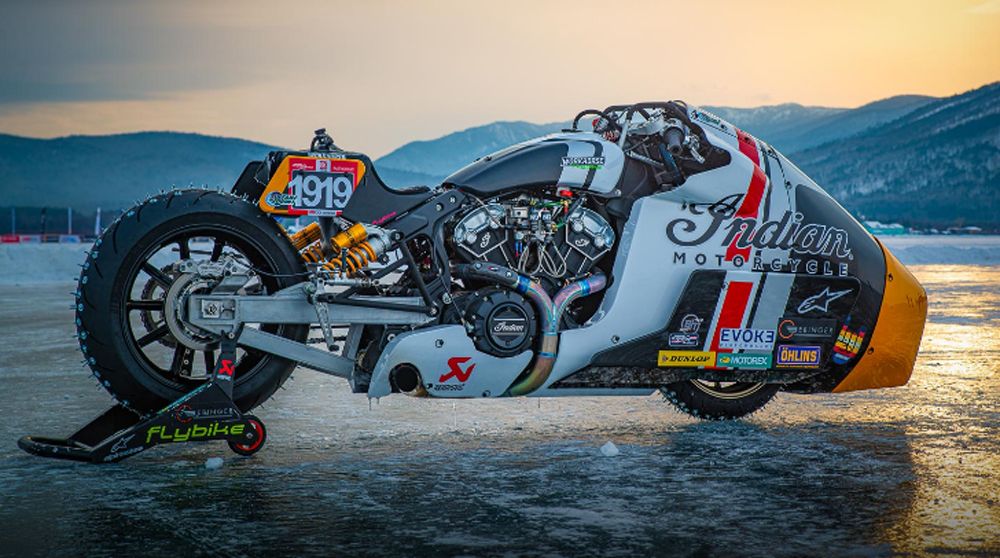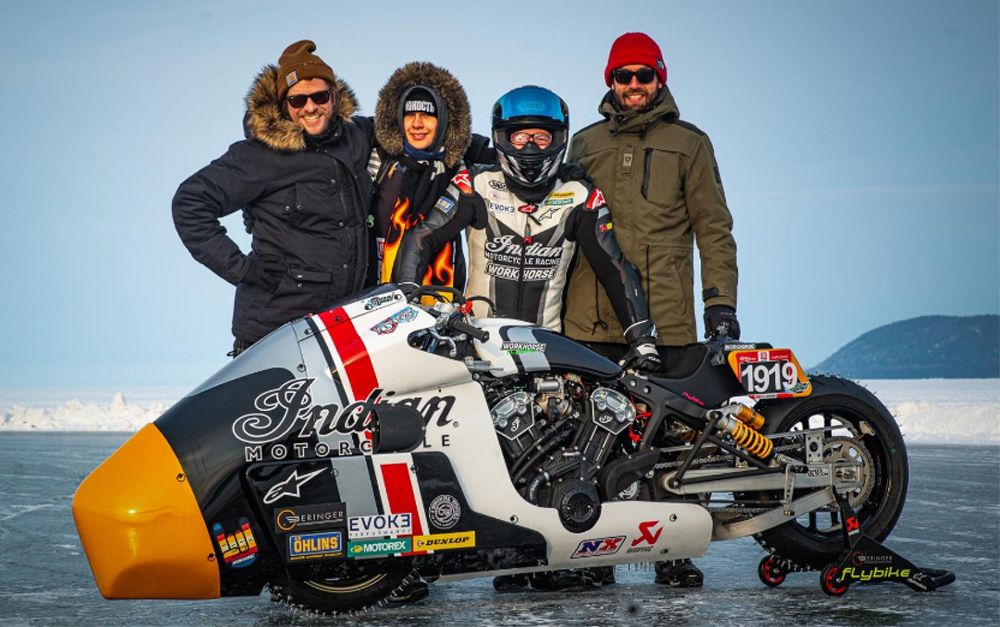For over a century, the Indian Company has manufactured some of the most iconic motorcycles to ever grace U.S. highways. But how one new model could handle the sub-zero temperatures and icy surface of Russia's Lake Baikal was a test that the creators of the IndianxWorkhorse Appaloosa didn't want to pass up.
Baikal Can Be Brutal On Any Bike
From Feb. 27 to March 1, the IndianxWorkhorse Appaloosa racing team, led by Brice Hennebert, the bike's creator and designer, took part in the Baikal Mile Ice Speed Festival to see how the Appaloosa V2.0 could handle the cold and slippery terrain. Technically a speed competition, Baikal doubles as a testing ground for bike companies and aficionados to see whether their favorite rides are able to withstand extreme conditions.
The team certainly had a great deal of international support with tires from Dunlop, suspension from Öhlins, brakes by Behringer, an exhaust system from Akrapovič and a variety of other parts from England's Evok3 Performance.
Ice Surface Inflicted Damage
With temperatures as low as -13 degrees Fahrenheit, the team did well enough to qualify for the one-eighth of a mile run as well as the mile-long course, even though the punishing ice managed to dislodge several studs from the rear tire which wrecked part of the body.
The bumpy ice also caused a few suspension issues, which were remedied by some tire pressure adjustments for subsequent runs. That was the good news, considering most bikes that test well on the Bonneville Salt Flats in Utah tend to break down at Baikal.
Fourth In The Factory Class
Unfortunately on the last day of the event, the Appaloosa, driven by Sébastien Lorentz from Paris-based Lucky Cat Garage, didn't finish first in any of the competitions. It did manage a fourth-place result in the factory class category.
While the bike didn't reach its anticipated speed of 125 mph, the team was impressed over how well it performed at 111 mph. Had it not been for an electrical failure on the bike, the team was convinced the bike would have performed much better.
Still, to Hennebert, racing at Baikal under the harshest conditions was a real eye-opener. “Racing on ice is hard,” he said in Ultimate Motorcycling. “This is the most incredible thing I’ve tried to do. I’ve learnt so much and had a hell of a lot of fun doing it."
Sources: Auto Evolution, Thunderpress, Ultimate Motorcycling




